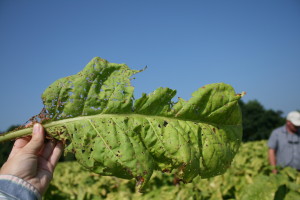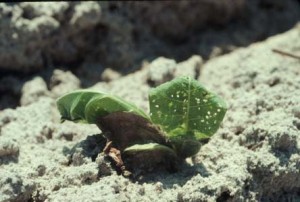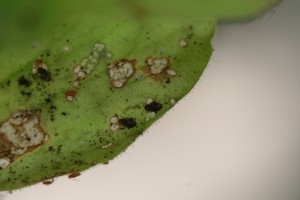Scouting for Tobacco Flea Beetles
go.ncsu.edu/readext?305186
en Español / em Português
El inglés es el idioma de control de esta página. En la medida en que haya algún conflicto entre la traducción al inglés y la traducción, el inglés prevalece.
Al hacer clic en el enlace de traducción se activa un servicio de traducción gratuito para convertir la página al español. Al igual que con cualquier traducción por Internet, la conversión no es sensible al contexto y puede que no traduzca el texto en su significado original. NC State Extension no garantiza la exactitud del texto traducido. Por favor, tenga en cuenta que algunas aplicaciones y/o servicios pueden no funcionar como se espera cuando se traducen.
Português
Inglês é o idioma de controle desta página. Na medida que haja algum conflito entre o texto original em Inglês e a tradução, o Inglês prevalece.
Ao clicar no link de tradução, um serviço gratuito de tradução será ativado para converter a página para o Português. Como em qualquer tradução pela internet, a conversão não é sensivel ao contexto e pode não ocorrer a tradução para o significado orginal. O serviço de Extensão da Carolina do Norte (NC State Extension) não garante a exatidão do texto traduzido. Por favor, observe que algumas funções ou serviços podem não funcionar como esperado após a tradução.
English
English is the controlling language of this page. To the extent there is any conflict between the English text and the translation, English controls.
Clicking on the translation link activates a free translation service to convert the page to Spanish. As with any Internet translation, the conversion is not context-sensitive and may not translate the text to its original meaning. NC State Extension does not guarantee the accuracy of the translated text. Please note that some applications and/or services may not function as expected when translated.
Collapse ▲When to scout for tobacco flea beetles
Tobacco flea beetle adults are frequently present in tobacco immediately after transplant until around six to seven weeks later. After this point, plants typically outgrow the flea beetle populations. In some cases, damaging tobacco flea beetle populations may also develop near harvest.
What part of the plant to scout for tobacco flea beetles
Tobacco flea beetles feed on upper and lower leaf surfaces. Post transplant,tobacco flea beetle adults may be present on and damage the entire plant.
Near harvest, flea beetles are most common in the lower 1/3 of plants, near the stalk.
How to scout for tobacco flea beetles
When scouting for tobacco flea beetles, it is important to inspect the top and underside of every leaf. Thresholds are based on live beetle counts, but flea beetle damage can be an indicator of a developing population. Flea beetle damage looks like small “shot holes” on leaves.

Numerous, tiny, “buckshot-like” holes are due to late season flea beetle damage. Photo: H.J. Burrack
While, beetles are quite noticeable on leaves, they also jump, as their common name suggests. It may be easier to get accurate flea beetle counts in the early morning when it is cool and beetles are less active.
Tobacco flea beetle thresholds
The threshold for small plants, post transplant, is an average of 4 or more beetles per plant. The post topping threshold for tobacco flea beetle is an average of 60 or more beetles per plant. It is difficult to count beetles on fully grown tobacco plants, and we hope to develop alternative thresholds to facilitate easier post topping scouting.




